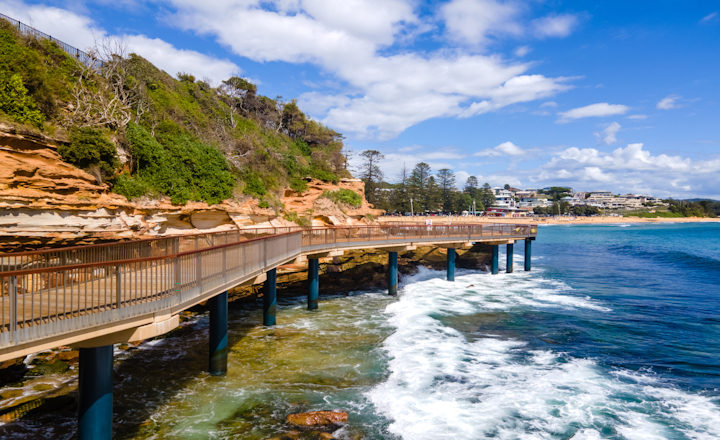
The Central Coast of New South Wales boasts stunning landscapes and a rich biodiversity. As the importance of environmental conservation grows, so does the need for sustainable building practices in this picturesque region.
Sustainable construction not only preserves the natural beauty but also promotes energy efficiency, reduces carbon footprints, and enhances the overall quality of life for its inhabitants. This ultimate guide aims to delve into various sustainable building practices.
Hiring a professional builder is paramount when embarking on any construction project where sustainability and environmental considerations are crucial. A seasoned builder brings expertise, experience, and a nuanced understanding of local regulations, materials, and ecological sensitivities.
They possess the ability to translate visions into tangible structures while adhering to sustainable practices, ensuring that the project aligns with the region's unique climate and ecosystem. Moreover, a professional builder offers valuable insights into the latest sustainable technologies, materials, and design trends, guiding the project toward eco-friendly solutions and optimal energy efficiency.
Their proficiency in managing timelines, budgets, and potential challenges ensures a smoother construction process, ultimately delivering a high-quality, sustainable build that harmonises with the environment and meets stringent standards.
Sustainable construction transcends the mere erection of buildings; it's a conscientious approach aimed at mitigating environmental impact throughout the entire lifecycle of a structure. This multifaceted concept involves a meticulous blend of innovative design, eco-conscious materials, resource efficiency, and strategic utilisation of renewable resources.
On the Central Coast NSW, where the verdant landscapes and diverse habitats thrive, adopting sustainable construction practices becomes an imperative responsibility. This encompasses not only minimising the immediate environmental footprint but also nurturing an ecosystem where buildings harmonise with the region's climate, local flora, and fauna.
Harnessing Renewable Energy becomes pivotal in this pursuit. The Central Coast basks in ample sunlight, offering an opportune landscape for leveraging solar power.
By seamlessly integrating solar panels into building designs, construction projects can tap into this abundant natural resource, reducing reliance on conventional energy sources and curbing greenhouse gas emissions.
This shift toward renewable energy aligns with the region's ethos of preserving its natural wealth while embracing modern technologies.
Utilising Eco-friendly Materials is another cornerstone. Opting for locally sourced materials not only bolsters the regional economy but also minimises the environmental impact attributed to transportation emissions. Timber sourced from responsibly managed forests, recycled materials, and low-impact products represent conscious choices that contribute to sustainable construction practices without disrupting the delicate balance of Central Coast's natural resources.
Water Conservation Strategies emerge as a vital component, especially in a region susceptible to drought cycles. Implementing innovative water-efficient systems like rainwater harvesting, greywater recycling, and integrating drought-resistant landscaping not only alleviates pressure on local water sources but also plays a pivotal role in preserving the area's delicate ecosystem. These measures go beyond mere conservation; they become guardians of the region's biodiversity, nurturing its flora and fauna amidst changing environmental dynamics.

In essence, sustainable construction practices are an intricate tapestry woven from eco-conscious design, renewable energy adoption, responsible material choices, and thoughtful water management strategies. These facets converge not only to create structurally sound buildings but also to safeguard and celebrate the rich natural heritage of the region, ensuring a harmonious coexistence between human development and the environment.
Understanding the realm of Green Building Certifications and Standards expands beyond a mere checklist; it's a commitment to a higher environmental ethos. Delving deeper into these certifications, such as the renowned Green Star and the National Australian Built Environment Rating System (NABERS), reveals a landscape rich in stringent benchmarks and sustainability benchmarks. Embracing and adhering to these certifications isn't just about meeting regulatory criteria; it's a testament to a holistic approach that considers a building's impact from conception to completion.
It signifies an unwavering dedication to minimising environmental footprints, maximising energy efficiency, and optimising resource usage. These certifications become guiding stars, directing construction projects toward a trajectory where structures aren't just edifices but beacons of responsible, eco-conscious design that resonate with the ethos of Central Coast NSW.
Passive Design and Natural Ventilation emerge as pivotal strategies in harnessing the inherent advantages of Central Coast NSW's moderate coastal climate. The integration of passive design elements extends far beyond mere architectural considerations; it's an intricate dance with nature itself.
By artfully orchestrating building orientations, leveraging natural shading, and embracing the gentle caress of natural ventilation, structures become living entities harmoniously entwined with their environment. This synergy not only curtails reliance on energy-intensive heating and cooling systems but also augments indoor comfort, creating spaces that breathe with the rhythm of the region's climate.
Waste Reduction and Recycling stand as stalwart guardians in the sustainable construction landscape. Beyond being a mere footnote in the construction process, they constitute a foundational pillar in the ethos of responsible building. Minimising construction waste through meticulous planning, material recycling, and the adoption of innovative construction techniques isn't just an environmental endeavour; it's a financial boon and a testament to ingenuity.
These practices manifest as a collaborative dance between efficiency and environmental stewardship, not only reducing ecological strain but also trimming project costs, ultimately fostering a win-win scenario for builders, residents, and the region's ecological integrity.
Community Engagement and Education represent the beating heart of sustainable construction. It's a narrative woven with threads of collaboration, empowerment, and enlightenment. Engaging the local community through immersive workshops, educational programs, and inclusive initiatives sparks a transformative ripple effect.
It's more than just disseminating knowledge; it's cultivating a culture where every individual becomes an ambassador for sustainability. This grassroots movement burgeons, permeating every aspect of community life, catalysing a cascade of sustainable practices that reverberate across the region, ultimately fostering an ecosystem where sustainable building isn't just a choice but a way of life.
Conclusion:
Embracing sustainable building practices in Central Coast NSW is not merely a trend but a responsible commitment towards preserving its natural splendour for generations to come. By integrating renewable energy, eco-friendly materials, water conservation, and community involvement, the region can flourish sustainably while maintaining its inherent beauty. Every effort towards sustainable construction in this region contributes significantly to a greener, healthier, and more vibrant Central Coast.

| < Prev | Next > |
|---|




